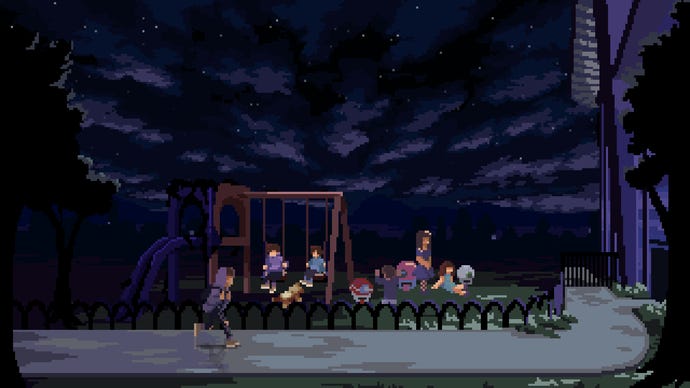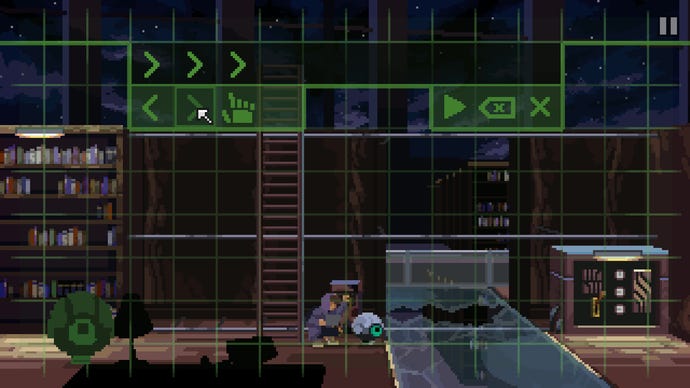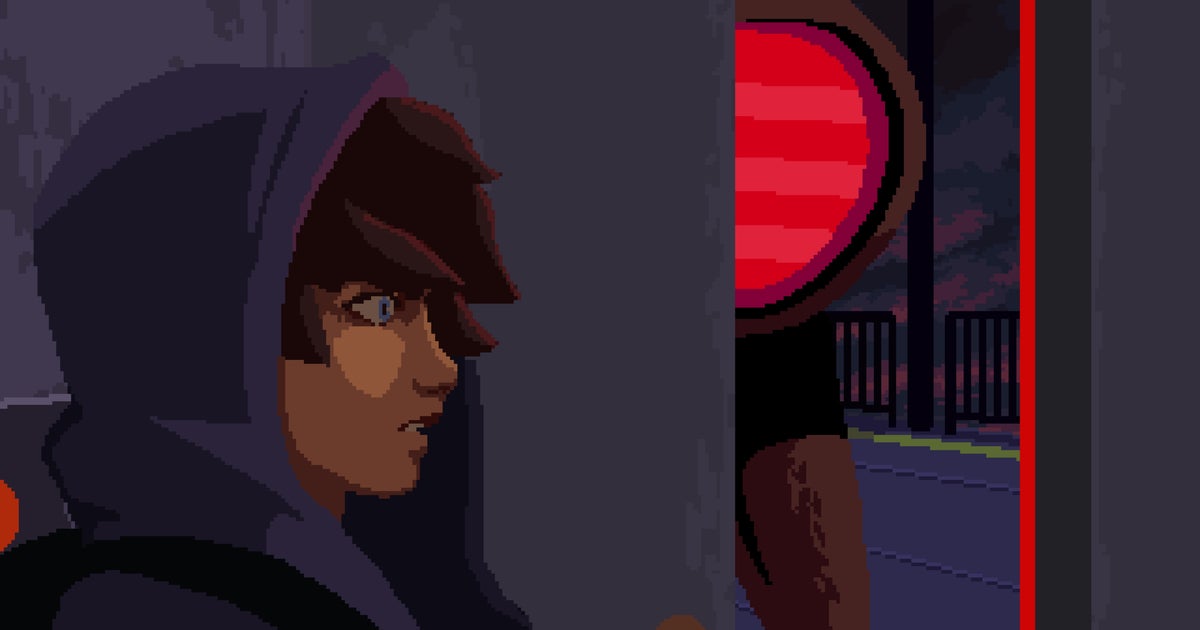When I think back to most movie rigs I’ve played recently, it’s not the last part of their genre title that I remember the most, but the first. The lush panoramas of your Planet Of Lanas, the haunting backdrops of your Somervilles, and the gooey, malleable monstrosities of your Insides. These dramatic moments linger in the memory far longer than their respective runs and jumps, and if it’s a real platforming challenge I’m looking for, I usually look elsewhere, trading cinema for action with your Raymans, Trines and Oris.
Full Void, on the other hand, is a cinematic run and jump that manages to strike a good balance between the two parts of its personality. Following the Another World schoolhouse where gorgeous pixel art meets one-foot-wrong-and-you’re-dead-style platforming (albeit with much more generous checkpoints than its 1991 source material), there’s real athleticism to your teenage hero’s journey to bring down a despotic AI, making its intricate leaps and bounds just as memorable as its detailed game pieces.
Admittedly, it’s not entirely clear what your little hooded hero is working towards at first. After racing down a strange, almost apocalyptically empty riverbank, pursued by what appear to be the evil cousins of the Vortigaunts from Half-Life, your first and only thought is to escape. You’ll soar across rooftops and descend into deadly, slippery sewers to outrun them, slowly becoming familiar with its somewhat rigid (but still very responsive) four degrees of movement and the timing of its carefully plotted chase sequences.
For the most part, its puzzle-focused platforming is typical adventure fare. Dodge hot steam jets that erupt from cracked pipes at intermittent intervals, slash your way through perilous gaps as deadly spider-bots patrol below. You know the chorus. Every once in a while you’ll have to twist some valves and twist some knobs to turn off some of these dangers, but make a mistake or get too close to an enemy, and you’ll be treated to a close-up death scene in the same Otherworld mold. Okay, processed might not be the right word here, but the developers at OutOfTheBit have clearly put a lot of thought into their deliciously animated demises, and they’re injecting a real sense of peril into this world you otherwise only see at arm’s length.


Thankfully, Full Void’s checkpoints are far more generous than even the recent anniversary editions of Another World, and will often take you back to the start of a particular puzzle if you die. There are times when he can still feel a bit stingy in this regard, causing you to respawn further away than you’d like, but luckily that hasn’t happened very often. Also, the solution was usually pretty clear after that first mess. There was really only one sequence where I felt like I was banging my head against the wall repeatedly – an unexpected stealth section in a lab – but the dime eventually fell after a few tries. Yes, there are a few instant death slip-ups that can feel particularly nasty – and sometimes downright unpredictable (I’m looking at you, giant bookworm) – but I can tolerate a bit of rote learning now and then when you’re only looking at an overall runtime of just over two hours.
Full Void’s puzzle-platforming chops also get a whole lot more interesting once you’ve escaped the sewers and collected your very own robot boyfriend from an abandoned facility. Thanks to a few brief flashback scenes, it’s clear that your now-absent mother had a hand in creating the AI, and turning the tables on your now-robotic oppressors with one of their own gives the plot a satisfying comeback arc. Your bot friend can only be deployed on stationary terminals, I should note, but programming movements and actions for it to perform, often while you work out your own human puzzles in tandem, makes for a satisfying and cerebrally pleasing foil for all the physical jumping, crawling through vents, climbing ladders, and traversing empty train carriages you do elsewhere. Alas, due to the game’s short runtime, the bot’s abilities never really scale much, but OutOfTheBit does a good job of extracting as much variety from them as possible in the game’s second act.

It’s a fun little adventure, and my only sticking point is that it’s really only at the end where you finally understand why you’re here and what you’ve been working towards all this time. Full Void has more than enough adrenaline in its veins to carry you through to its climactic finale, but when the threat of its tense pursuit Vortigaunt falls, it begins to lose momentum somewhat. You’re just looking for an exit at this point, and even when you find one, it’s not entirely clear where you’re headed next or why.
Still, it doesn’t take long to find out, and played in one sitting, Full Void has just enough ups and downs to keep your interest, well, piqued. Its eye-catching pixel art and moody soundtrack set the perfect tone for this dystopian adventure, and its strong sense of challenge gives it the bite that so many other cinematic platformers often lack. Given that the developers’ previous work was limited to compilations of mobile and arcade games, this is an impressive start into a new genre for the team at OutOfTheBit, and hopefully we can see more in the future (although one that hopefully isn’t overrun by Vortigaunt AI monsters).
This review is based on a retail version of the game provided by developer OutOfTheBit Ltd.


